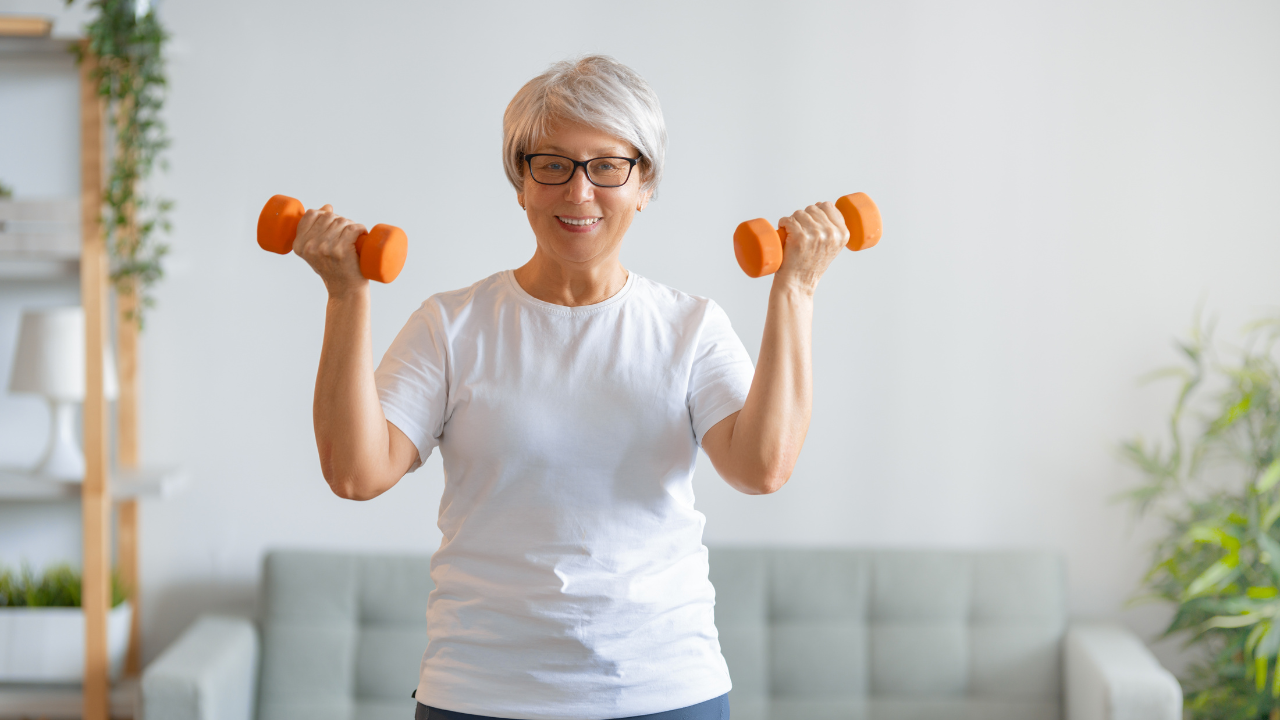Maintaining mobility is crucial for seniors who want to lead an active, independent life. As we age, our bodies naturally undergo changes that can lead to decreased flexibility, balance issues, and reduced strength. Fortunately, incorporating regular mobility exercises for seniors into a daily routine can help counter these effects, ensuring that older adults remain agile and capable of performing everyday tasks. In this blog, we’ll explore five of the best mobility exercises for seniors that can improve overall movement, reduce the risk of falls, and enhance quality of life.
Why Mobility Matters for Seniors
Mobility for seniors is about more than just the ability to move around. It encompasses flexibility, balance, strength, and coordination—all of which are essential for maintaining independence and preventing injuries. As we age, the natural wear and tear on our joints, muscles, and bones can lead to mobility problems such as stiffness, pain, and reduced range of motion. These issues can make it difficult for seniors to perform simple tasks like reaching for an item on a shelf, getting out of a chair, or even walking.
Regular mobility exercises for older adults can help maintain and even improve these essential functions. Physical therapy and physiotherapy are often recommended for seniors who experience significant reduced mobility, as these therapies focus on exercises that enhance movement and function. However, even those who aren’t undergoing formal therapy can benefit from incorporating the right exercises into their daily routine.
The 5 Best Mobility Exercises for Seniors
Here are five effective senior mobility exercises that can be done at home or with the guidance of a physical therapist. These exercises focus on improving flexibility, strength, and balance, all of which contribute to better mobility and overall health.
1. Ankle Circles
Mobility exercises that focus on the ankles are essential for maintaining balance and preventing falls. Ankle circles are a simple yet effective way to keep the joints flexible and improve circulation.
- How to do it: While seated in a sturdy chair, extend one leg out straight. Slowly rotate your ankle in a circular motion, making small circles in one direction. After 10-15 rotations, switch directions. Repeat the exercise with the other ankle.
- Benefits: This exercise helps in maintaining flexibility in the ankle joints, which is crucial for walking and other weight-bearing activities.
2. Seated Marching
Chair exercises are perfect for seniors with limited mobility or those who are recovering from an injury. Seated marching is a great way to engage the hip flexors and lower abdominal muscles.
- How to do it: Sit up straight in a chair with your feet flat on the floor. Lift one knee as high as you can, as if you are marching in place, then lower it back down. Repeat with the other leg. Aim for 20-30 marches on each side.
- Benefits: This exercise strengthens the hip flexors and lower abdominal muscles, both of which are important for walking and maintaining balance.
3. Torso Twists
Flexibility in the upper body is just as important as lower body mobility. Torso twists are effective stretching exercises that enhance flexibility in the spine and abdominal muscles.
- How to do it: Sit in a chair with your feet flat on the floor and your arms crossed over your chest. Slowly twist your torso to the right as far as you comfortably can, then return to the center. Repeat on the left side. Perform 10 twists on each side.
- Benefits: This exercise improves spinal flexibility and strengthens the core muscles, which are crucial for maintaining good posture and balance.
4. Heel-to-Toe Walk
Balance exercises are a critical component of mobility training for seniors. The heel-to-toe walk helps improve coordination and balance, which are key to preventing falls.
- How to do it: Stand up straight with your feet together. Take a step forward by placing the heel of one foot directly in front of the toes of your other foot. Continue walking in a straight line, placing one foot in front of the other, heel to toe. Try to take 10-15 steps without losing balance.
- Benefits: This exercise enhances coordination and strengthens the muscles involved in balance, which are essential for safe walking.
5. Overhead Reach
Maintaining the flexibility and strength of the shoulders and upper back is important for performing daily activities such as reaching for items or lifting objects. The overhead reach is a simple but effective exercise to improve these areas.
- How to do it: While seated or standing, lift both arms straight up overhead as high as you can. Hold the stretch for a few seconds, then slowly lower your arms back down. Repeat 10-15 times.
- Benefits: This exercise helps maintain flexibility in the shoulder joints and strengthens the muscles of the upper back and shoulders, which are essential for good posture and upper body mobility.
How to Improve Mobility in Elderly Individuals
Improving mobility in elderly individuals involves more than just performing exercises. It’s about adopting a comprehensive approach that includes regular physical activity, a healthy diet, and possibly physio sessions tailored to address specific needs. Here are a few tips on how to enhance mobility for seniors:
- Consistency is Key: Incorporate mobility exercises for elderly individuals into daily routines. Consistency ensures that the muscles and joints remain flexible and strong.
- Focus on Balance: Balance is a significant factor in preventing falls, a common concern for seniors. Exercises like the heel-to-toe walk and other balance-focused activities can greatly reduce the risk of falling.
- Stay Active: Encourage regular walking and other low-impact activities like swimming or cycling. These activities not only improve mobility for seniors but also contribute to overall cardiovascular health.
- Consult a Professional: For those with significant mobility problems, consulting with a physical therapist or physiotherapist can be beneficial. These professionals can design a mobility training program that addresses specific issues and enhances overall movement.
- Modify as Needed: It’s essential to modify exercises based on individual capabilities. For example, chair exercises are ideal for seniors who find it difficult to stand for long periods.
The Role of Physical Therapy and Physiotherapy
Physical therapy and physiotherapy play a crucial role in helping seniors overcome mobility problems and regain their independence. These therapies often include a combination of mobility exercises, stretching exercises, and strength training designed to address specific issues. For seniors recovering from surgery or injury, physio sessions can be particularly beneficial in restoring function and improving overall mobility for seniors.
Conclusion
Maintaining and improving mobility is essential for seniors who wish to lead active, independent lives. By incorporating these five best mobility exercises for seniors into a regular routine, older adults can enhance their flexibility, balance, and strength, reducing the risk of falls and other injuries. Whether through physical therapy, physiotherapy, or simple mobility exercises done at home, staying active and mobile is the key to enjoying a healthier, more fulfilling life in the golden years.


